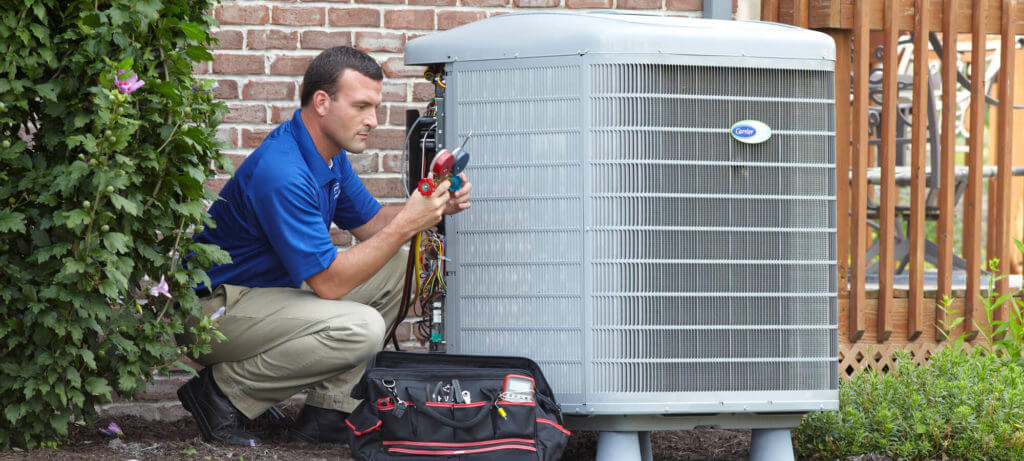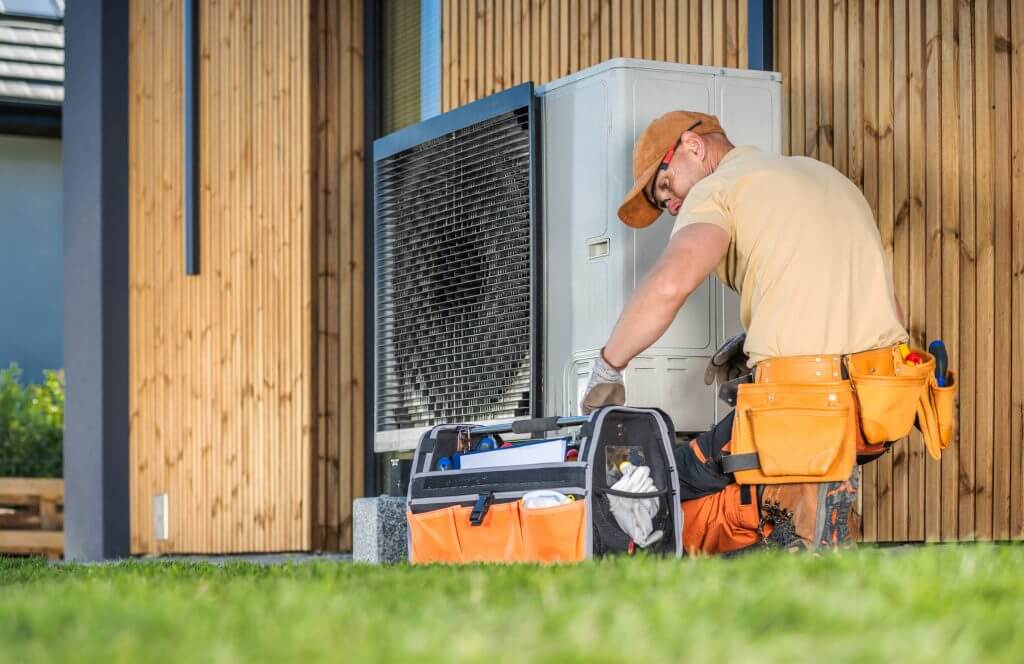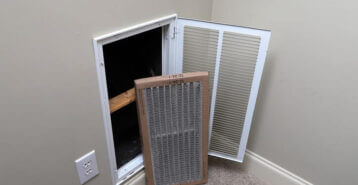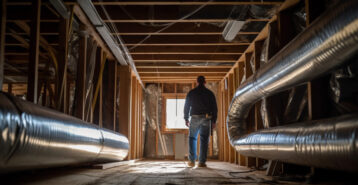HVAC Incentives: What Changed After the One Big Beautiful Bill (OBBBA)
If you are planning to upgrade your home’s heating or cooling system, the landscape of incentives looks different than it did just months ago. Several major federal HVAC tax credits and rebates expired at the end of 2025 due to provisions in the One Big Beautiful Bill Act, known as OBBBA, which accelerated the sunset of programs that were originally expected to continue through 2032.
This guide explains what has changed now that the OBBBA timeline has taken effect, including which programs ended on Jan. 1, 2026, what financial support was lost, what remains available, and how homeowners can find state and local incentives to help offset installation costs going forward.
What Is The One Big Beautiful Bill (OBBBA)?
The One Big Beautiful Bill Act (OBBBA) is a federal spending package passed in July 2025 and championed by Republicans and President Donald Trump. The bill restructures how the U.S. funds residential energy-efficiency programs. While it expands certain infrastructure and clean-energy investments, it also ends or reduces many homeowner-focused HVAC incentives through early sunsetting.
These incentives were originally introduced or expanded under laws such as the Inflation Reduction Act (IRA) of 2022 and were intended to remain in place through 2032. OBBBA compressed that schedule, closing much of the federal support for residential HVAC on Dec. 31, 2025.
Key Dates And Expiration Timeline
- Through Dec. 31, 2025: Federal tax credits and rebates under prior law remained active until the deadline.
- After Jan. 1, 2026: Many homeowner energy-efficiency incentives either dropped to lower benefit levels or ended entirely.
- Grace periods: Some state-administered rebates allowed applications submitted before the deadline to be processed in early 2026, but this applied only to projects contracted or installed before the cutoff.
Which Incentives Ended Or Changed
Below is an overview of the federal HVAC incentives most affected by OBBBA and what homeowners lost when these programs sunset.
Energy Efficient Home Improvement Credit (Section 25C)
Status: Expired Dec. 31, 2025.
This credit previously allowed homeowners to claim 30% of qualifying energy-efficient home improvements, up to annual limits. For HVAC, it supported upgrades such as:
- Heat pumps, biomass stoves, and boilers
- High-efficiency furnaces and central air conditioners
- Home energy audits
What homeowners lost: Up to $3,200 per year in federal tax credits for qualifying HVAC and efficiency improvements, including separate caps for certain categories of equipment.
Residential Clean Energy Credit (Section 25D)
Status: Ended for upgrades installed after Dec. 31, 2025.
This credit supported residential clean-energy systems, including rooftop solar, battery storage, and geothermal heat pumps.
What homeowners lost: The ability to claim a significant federal tax credit each year for qualifying clean-energy installations placed in service after 2025.
Federal HVAC Incentives That Were Available Before Expiration
Even though these programs have now ended or changed, homeowners may still want to understand what they included — especially if they completed projects before the deadline and are now filing taxes or seeking reimbursements.
Energy Efficient Home Improvement Credit (Section 25C)
The Section 25C credit allowed homeowners to claim 30% of the total cost of qualifying HVAC and efficiency improvements, subject to annual caps. Eligible systems typically included:
- Heat pumps, biomass stoves, and boilers
- High-efficiency furnaces and central air conditioners
- Home energy audits
Key facts (prior to expiration):
- Maximum annual credit of up to $3,200, with specific caps for certain types of equipment
- Equipment such as doors, windows, and air sealing materials had to meet ENERGY STAR certification
- Available for primary residences only; landlords did not qualify
- Expired Dec. 31, 2025
High-Efficiency Electric Home Rebate Act (HEEHRA)
This rebate program was designed to help low- and moderate-income households switch to energy-efficient electric appliances and HVAC systems.
Program highlights (while active):
- Rebates up to $8,000 for qualifying electric heat pump systems
- $1,750 for heat pump water heaters
- $840 for condensing electric dryers and electric ranges
- Up to $1,600 in weatherization rebates for windows, insulation, and air sealing
- Income-based eligibility
- Administered by state energy offices
Under OBBBA, remaining funding was tightened and reallocated, and full-scale rollout was limited or curtailed in many states.
State And Local HVAC Incentives Still Available
While federal incentives have shrunk, many states, utilities, and local governments continue to offer rebates and financing programs for energy-efficient HVAC systems. These may include rebates for heat pumps, smart thermostats, efficient furnaces, boilers, and home energy audits.
Before starting a project, homeowners should:
- Check with their state energy office or utility provider for current rebates and loan programs.
- Confirm eligibility requirements such as equipment type, efficiency levels, and installation dates.
- Ask contractors whether they handle rebate submissions and documentation directly.
| State | Program Details |
|---|---|
| Alabama | TVA Residential Energy Efficiency Rebate Program Eligible: HVAC tune-ups, heat pumps, mini splits Type: Rebate Max Value: $1,500 Expiration: Varies |
| Alaska | Energy Efficiency Interest Rate Reduction Program Eligible: Homes with 5 or 6 Star Plus energy ratings, home improvements Type: Interest rate reduction Max Value: Varies Expiration: Varies |
| Arizona | Property Tax Assessment for Renewable Energy Equipment Eligible: Solar, wind, biomass, hydroelectric energy Type: Property tax incentive Max Value: Equipment assessed at 20% of its depreciated cost Expiration: Varies |
| Arkansas | Arkansas Oklahoma Gas (AOG) Residential Rebate Program Eligible: Water heaters, furnaces, programmable thermostats Type: Rebate Max Value: Up to $800 Expiration: Until funding runs out |
| California | TECH Clean California Eligible: Heat pumps Type: Rebate Max Value: Up to $5,700 Expiration: 12/31/2025 |
| Colorado | XCEL Energy Residential Energy Efficiency Rebate Programs Eligible: Water heaters, furnaces, boilers, thermostats, etc. Type: Rebate Max Value: Up to $3,300 Expiration: Current rebates through 2026 |
| Connecticut | Groton Utilities Residential Energy Efficiency Rebate Program Eligible: Insulation, thermostats, mini splits, heat pumps Type: Rebate Max Value: Up to $100K Expiration: 12/31/2025 |
| Delaware | Weatherization Assistance Program Eligible: Insulation for HVAC systems and pipes Type: Free for income-qualified individuals Max Value: Provides insulation to lower utility bills Expiration: None listed |
| Georgia | Marietta Power & Water Residential Energy Efficiency Rebate Eligible: Water heaters, heat pumps, programmable thermostats Type: Rebate Max Value: Up to $500 Expiration: None listed |
| Florida | FPL Energy Savings Program Eligible: AC units, insulation upgrades Type: Rebate Max Value: Up to $2,150 Expiration: No expirations set |
| Hawaii | Energy Efficiency Rebate Program Eligible: AC, water heaters, mini splits Type: Rebate Max Value: Up to $1,200 Expiration: None listed |
| Idaho | IGC Energy Efficiency Rebate Program Eligible: Boilers, furnaces, smart thermostats Type: Rebate Max Value: Up to $900 Expiration: 90 days from installation of appliance |
| Illinois | MidAmerican Energy Residential Energy Efficiency Rebate Program Eligible: Heat pumps, mini splits, furnaces, ACs Type: Rebate Max Value: Up to $1,200 Expiration: Dec. 31, 2025 |
| Indiana | Dubois Rec Residential Energy Efficiency Rebate Program Eligible: Heat pumps Type: Rebate Max Value: Up to $2,000 Expiration: 90 days from installation |
| Iowa | Ames Electric Department Residential Energy Efficiency Rebate Program Eligible: Mini splits, heat pumps, AC, smart thermostat Type: Rebate Max Value: Up to $1,000 Expiration: None listed |
| Kansas | How$mart Energy Efficiency Finance Program Eligible: Heat pumps, AC, insulation Type: Rebate Max Value: Not listed Expiration: None listed |
| Kentucky | Salt River Electric Residential Energy Efficiency Rebate Program Eligible: Heat pump, furnace, baseboard heating Type: Rebate Max Value: Up to $750 Expiration: None listed |
| Louisiana | Entergy New Orleans Residential Energy Efficiency Program Eligible: Mini splits, AC units, heat pump water heater, smart thermostat Type: Rebate Max Value: Up to $1,000 Expiration: None listed |
| Maine | Efficiency Maine Residential Home Energy Savings Program Eligible: Insulation, water heaters, heat pumps, boilers Type: Rebate Max Value: Up to $12,900 Expiration: None listed |
| Maryland | SMECO Residential Energy Efficiency Rebate Program Eligible: Heat pump water heaters, programmable thermostats Type: Rebate Max Value: Up to $1,600 Expiration: None listed |
| Massachusetts | Mass Save Residential Energy Efficiency Programs Eligible: Heat pumps, water heaters, air conditioners Type: Rebate Max Value: Up to $10,000 Expiration: None listed |
| Michigan | Great Lakes Energy Residential Energy Efficiency Rebate Program Eligible: Heat pump water heater, AC units, mini split, programmable thermostat Type: Rebate Max Value: Up to $2,250 Expiration: Dec. 31, 2025; new rebates in 2026 |
| Minnesota | Xcel Energy Rebate Eligible: Central AC, heat pumps Type: Rebate Max Value: Up to $2,000 Expiration: No expiration set |
| Mississippi | TVA Residential Energy Efficiency Rebate Program Eligible: Heat pumps, mini splits, central AC units Type: Rebate Max Value: Up to $1,500 Expiration: None listed |
| Missouri | City Utilities of Springfield Residential Energy Efficiency Rebate Program Eligible: Heat pumps, furnace, insulation, programmable thermostat Type: Rebate Max Value: Up to $500 Expiration: None listed |
| Montana | Montana-Dakota Utilities Residential Energy Efficiency Rebate Program Eligible: Natural gas furnace Type: Rebate Max Value: Up to $300 Expiration: Until annual funding runs out |
| Nebraska | Southern Power District Residential Energy Efficiency Rebate Program Eligible: Heat pumps, water heater, smart thermostat Type: Rebate Max Value: Up to $3,300 Expiration: None listed |
| Nevada | Southwest Gas Corporation Residential Energy Efficiency Rebate Program Eligible: Water heating, heating and cooling Type: Rebate Max Value: Up to $225 Expiration: Dec. 2, 2025 or Jan. 1, 202? |
| New Hampshire | New Hampshire Electric Co-op Residential Energy Efficiency Rebate Programs Eligible: Heat pumps and water heaters Type: Rebate Max Value: Up to $1,250 Expiration: None listed |
| New Jersey | South Jersey Gas Residential Energy Efficiency Rebate Program Eligible: Gas furnace, water heater, central AC Type: Rebate Max Value: Up to $1,750 Expiration: Varies |
| New Mexico | PNM Residential Energy Efficiency Rebate Program Eligible: Appliances, tune-ups, smart thermostats Type: Rebate Max Value: Up to $400 Expiration: None listed |
| New York | NYSERDA Clean Heat Program Eligible: Heat pumps Type: Rebate, loans Max Value: Up to $25,000 for loans Expiration: No expiration set |
| North Carolina | Carteret-Craven Electric Cooperative Residential Energy Efficiency Rebate Program Eligible: Heat pump water heater Type: Rebate Max Value: Up to $300 Expiration: None listed |
| North Dakota | Xcel Energy Residential Energy Efficiency Rebate Programs Eligible: Furnaces, boilers Type: Rebate Max Value: Up to $100 Expiration: None listed |
| Ohio | The Energy Cooperative Residential Energy Efficiency Rebate Program Eligible: Dual fuel heat pump Type: Rebate Max Value: Up to $1,500 Expiration: None listed |
| Oklahoma | Oklahoma Natural Gas Residential Efficiency Rebates Eligible: Water heaters, furnaces, boilers, AC units Type: Rebate Max Value: Up to $2,500 Expiration: None listed |
| Oregon | EWEB Residential Energy Efficiency Rebate Programs Eligible: Heat pump water heaters, heating and cooling, insulation Type: Rebate Max Value: Up to $6,000 Expiration: None listed |
| Pennsylvania | PPL Electric Utilities Residential Energy Efficiency Rebate Program Eligible: Water heaters, heat pumps, AC units, programmable thermostats Type: Rebate Max Value: Up to $500 Expiration: None listed |
| Rhode Island | Rhode Island Energy Residential Gas Heating Rebate Programs Eligible: Water heaters, furnaces, boilers, programmable thermostats Type: Rebate Max Value: Up to $950 Expiration: None listed |
| South Carolina | Aiken Electric Cooperative Inc. Residential Energy Efficiency Rebate Program Eligible: Water heaters, programmable thermostats Type: Rebate Max Value: Up to $250 Expiration: None listed |
| South Dakota | Xcel Energy Residential Energy Efficiency Rebate Programs Eligible: Furnaces, boilers Type: Rebate Max Value: Up to $100 Expiration: None listed |
| Tennessee | TVA Residential Energy Efficiency Rebate Program Eligible: Heat pumps, AC units, mini split, insulation Type: Rebate Max Value: Up to $1,500 Expiration: None listed |
| Texas | Oncor HVAC Rebate Eligible: Heat pumps, AC, weatherization Type: Rebate Max Value: Up to $3,500 Expiration: No expiration set |
| Utah | Dominion Energy Residential Energy Efficiency Rebate Programs Eligible: Smart thermostat, gas furnace, boiler, water heater Type: Rebate Max Value: Up to $1,200 Expiration: None listed |
| Vermont | Efficiency Vermont Residential Energy Efficiency Rebate Programs Eligible: Appliances, heat pumps, AC units, pellet furnaces Type: Rebate Max Value: Up to $6,500 Expiration: None listed |
| Virginia | Washington Gas Residential Energy Efficiency Rebate Program Eligible: Water heaters, furnaces, boilers, programmable thermostats Type: Rebate Max Value: Up to $2,600 Expiration: None listed |
| Washington | Columbia REA Residential Efficiency Rebate Program Eligible: Appliances, heat pumps, smart thermostats, mini splits, insulation Type: Rebate Max Value: Up to $1,400 Expiration: None listed |
| West Virginia | AEP Appalachian Power Residential Energy Efficiency Rebate Program Eligible: Water heaters, heat pumps, programmable thermostats Type: Rebate Max Value: Up to $700 Expiration: None listed |
| Wisconsin | Xcel Energy Residential Energy Efficiency Rebate Programs Eligible: Furnaces, boilers Type: Rebate Max Value: Up to $100 Expiration: None listed |
| Wyoming | Carbon Power & Light Residential Energy Efficiency Rebate Program Eligible: Geothermal heat pumps, appliances, water heaters Type: Rebate Max Value: Up to $7,500 Expiration: Within 90 days of purchase date |
Note: Incentive amounts and expiration dates are subject to change. For the most current details, visit energy.gov or dsireusa.org.
How Homeowners Can Still Take Advantage Of Remaining Incentives
Although federal benefits have shifted, there are still meaningful opportunities to lower HVAC upgrade costs.
- Check state and utility programs: Many continue to offer rebates unaffected by OBBBA.
- Confirm eligibility: Ensure equipment meets required efficiency standards such as ENERGY STAR or AHRI certifications.
- Keep documentation: Invoices, model numbers, product labels, and certification sheets remain essential for any rebates still available.
- Stack incentives where allowed: Some state and utility rebates can still be combined, as long as each program permits it.

Verify System Eligibility And Documentation
Before installation, homeowners should check HVAC models against official efficiency databases and keep copies of all paperwork.
- ENERGY STAR Product Finder for federal or program-based efficiency eligibility.
- AHRI Directory of Certified Product Performance for rebate and performance verification.
Combining Federal, State, And Local Incentives
Most of the major federal stacking opportunities ended in 2025, but homeowners may still be able to combine:
- State or county-level rebates
- Utility-funded incentives
- Low-interest energy-efficiency loans
Program rules vary, so verify stacking policies with your installer or rebate administrator.
What To Expect Going Forward
After Dec. 31, 2025, homeowners can expect:
- Significantly fewer and smaller federal HVAC incentives
- Greater reliance on state-administered rebate programs
- Continued support from utility-funded efficiency incentives
- Increased use of private-sector financing, such as low-interest green loans
Even though OBBBA narrowed federal funding, energy-efficient HVAC systems remain a strong investment for homeowners who want to reduce their energy bills and carbon footprints.

FAQs About HVAC Incentives And The OBBBA Changes
When Did Federal HVAC Tax Credits End Under OBBBA?
Most of the major homeowner-focused federal HVAC tax credits and rebates expired on Dec. 31, 2025, or were significantly reduced starting Jan. 1, 2026, when OBBBA’s provisions took effect.
Which HVAC Upgrades Still Qualify For Rebates Now?
Many state and utility programs still offer rebates for ENERGY STAR-certified heat pumps, high-efficiency furnaces, boilers, smart thermostats, and home energy audits. Eligible equipment and requirements vary by program, so always check current rules.
Can I Still Combine Multiple HVAC Incentives?
Yes, in some cases. While the large federal stackable credits have ended, homeowners can often combine state, local, and utility programs if each incentive allows it. Always verify stacking rules with your contractor or the program administrator.
Will New Incentives Replace The Old Ones?
It is possible. OBBBA reallocates funding to states, and some may choose to create or expand their own rebate or loan programs. Availability will depend on individual state priorities and budgets.
Is There Still A “Best Time” To Install A New HVAC System?
There is no longer a federal deadline, but timing upgrades around seasonal contractor availability, remaining state or utility funding, and equipment pricing can still help homeowners save money.
Bottom Line
The federal window has closed on several major HVAC incentives that once allowed homeowners to claim thousands of dollars in tax credits and rebates. However, state, local, and utility rebates remain valuable, and in many areas they will play an even larger role going forward.
If you are considering a new HVAC system after 2025, checking your regional programs can still lead to meaningful savings on high-efficiency equipment and installation.
Modernize can connect you with licensed HVAC contractors who can help you choose eligible equipment and apply for all of the incentives that are still available in your area.
Compare top-rated HVAC pros in your area.
Read real homeowner reviews, explore qualifications, and view promotions. Modernize makes it easy to browse professionals and find one that will be perfect for your project.







